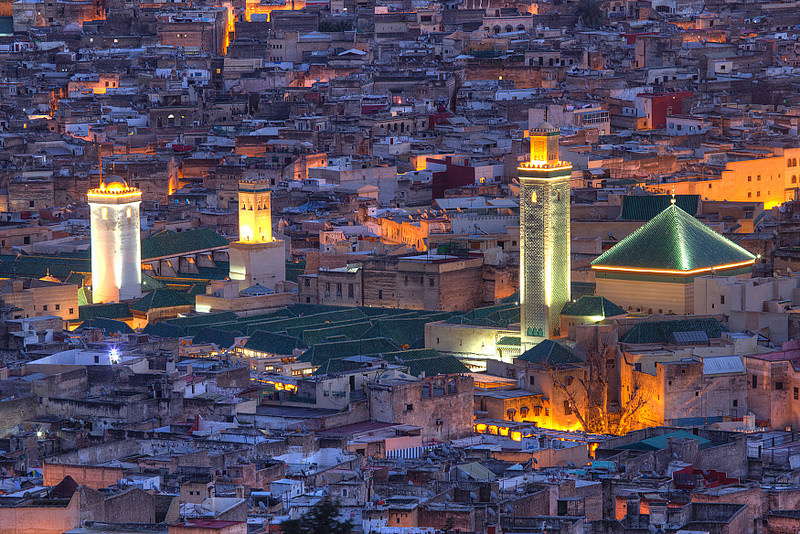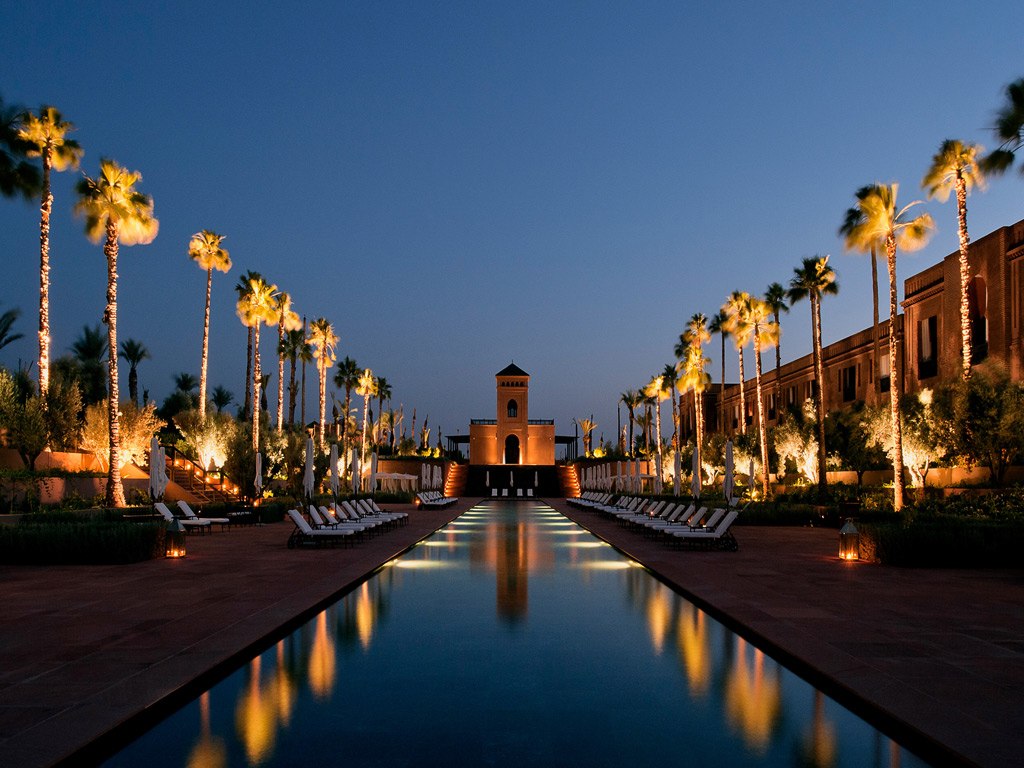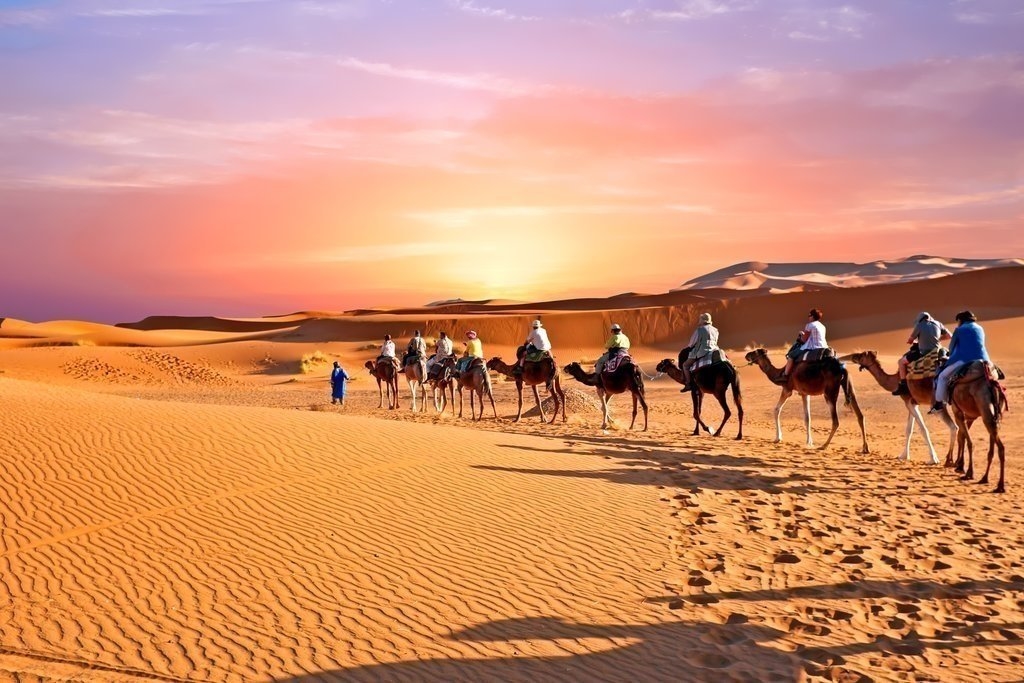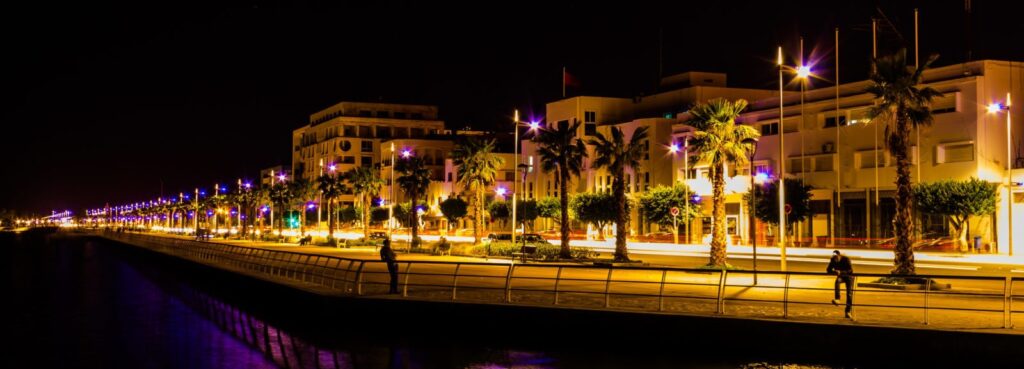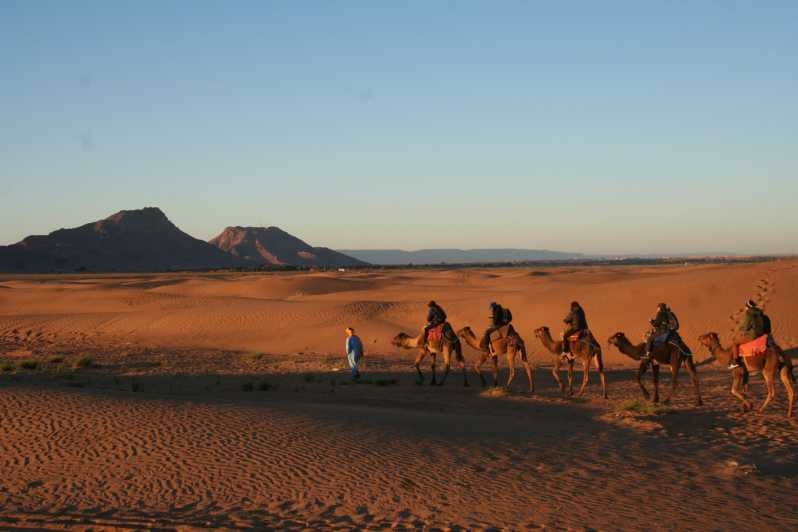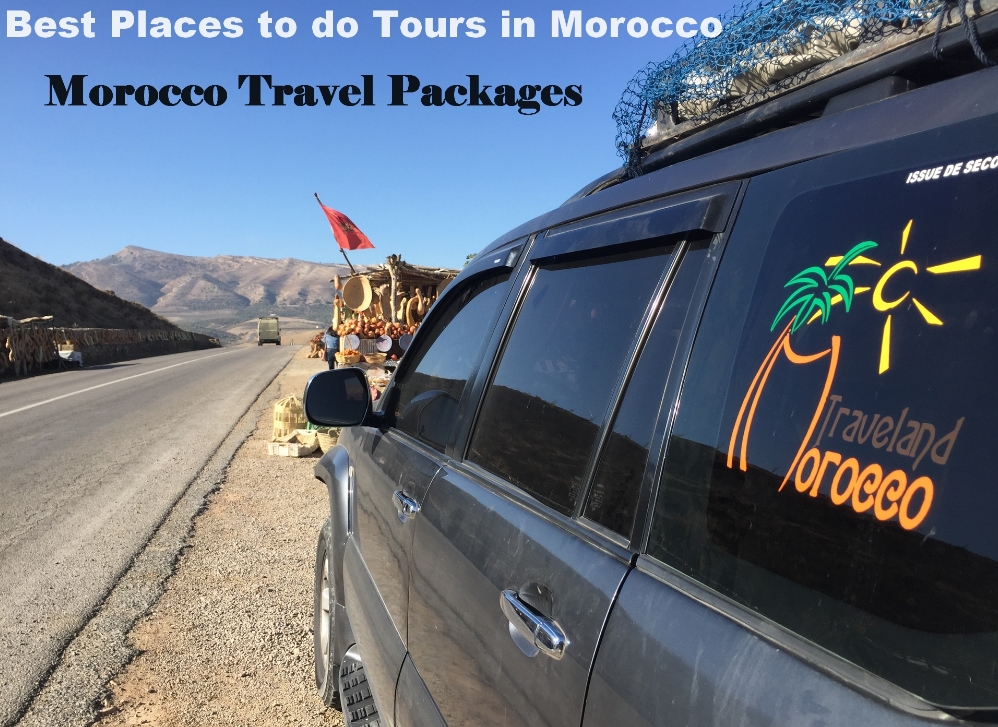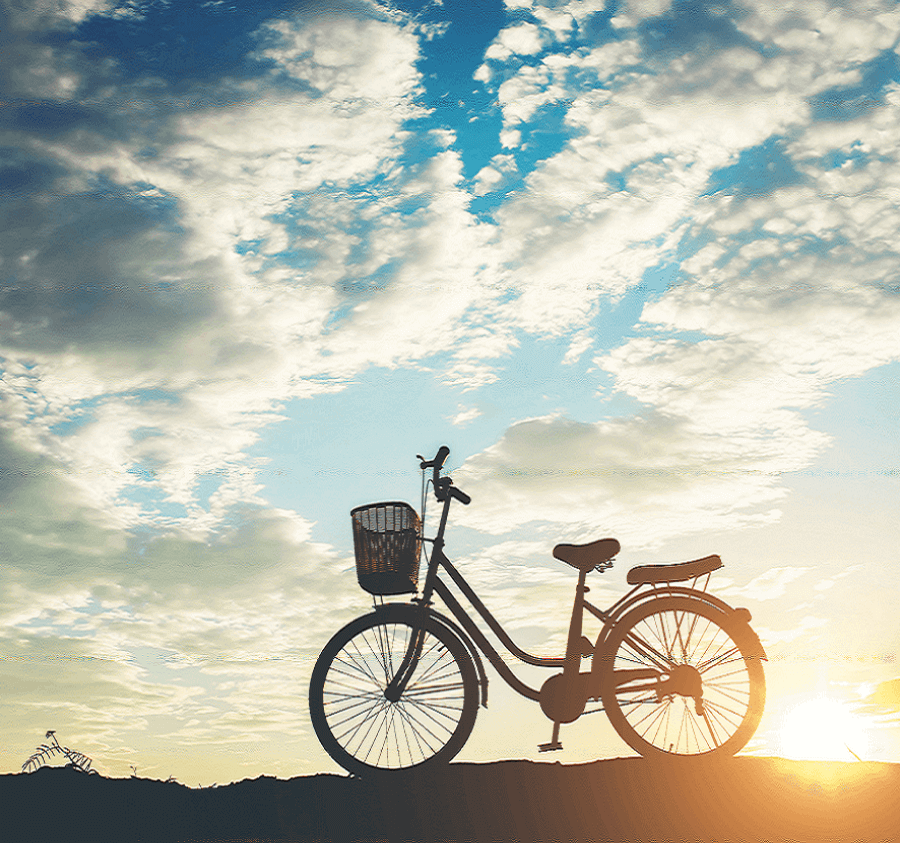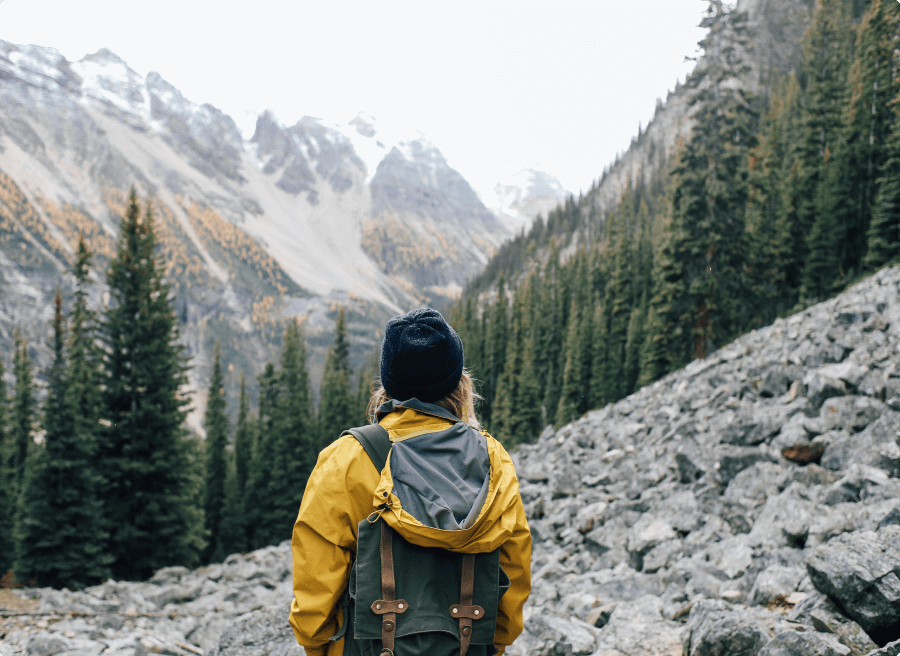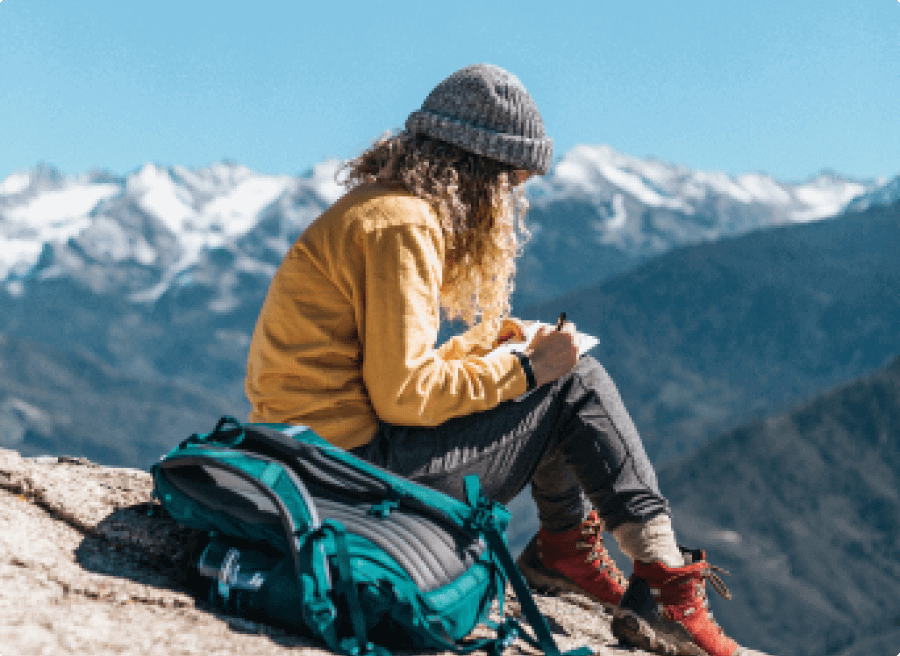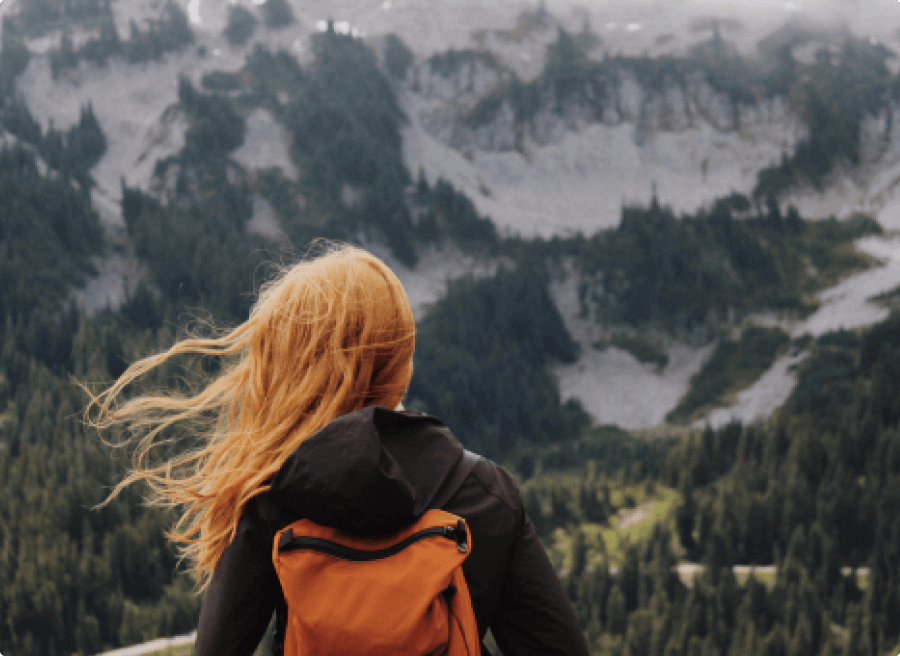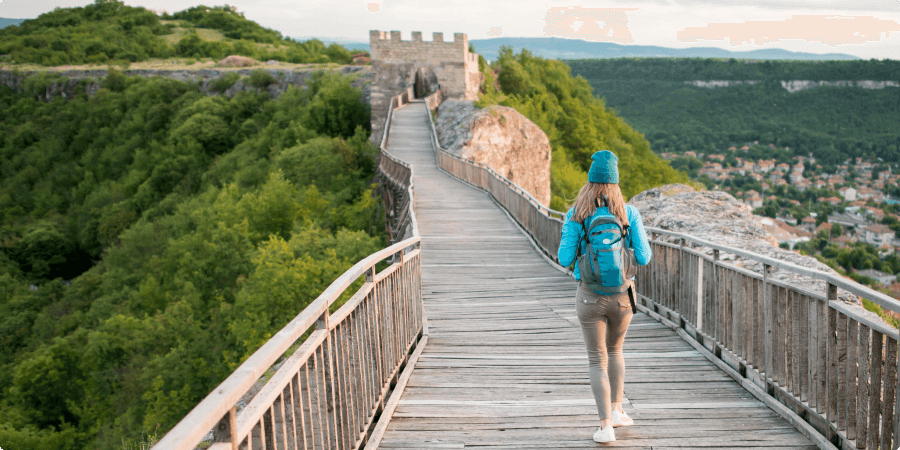Best places to do Tours in Morocco tastes wonderful and exotic to the eye, with the magic of the markets stacked with large numbers of treasures, and endless glasses of mint tea. It’s an adventure in some of the most stunning landscapes in North Africa, where the desert lies on its doorstep, and beyond the Atlas Mountains, Casablanca Tours, Marrakech Tours, Tours from Tangier and Fes
Tours in Morocco, in other words is a journey into a world free of tranquility consisting of attractive coastal villages, colorful towns clinging to the hills, and remote sites defended by literary forts.
Morocco is wonderful country, a fusion between the Berbers and African worlds. It is steeped in ancient customs.
It is no wonder, that many artists love Morocco and writers for decades and still bewitches everyone who visits them, and now let’s get to know the most important tourist attractions in Morocco and the attractions of major cities.
The most important tourist attractions in Morocco
Tourist attractions in Morocco, and Tours from Marrakech are the most prominent:
Marrakech city
It is the center of tourism in Morocco, Marrakesh is a city that summarizes all the charm of the strange northern Morocco. He provided the name of the city root of the name of the country itself, explaining the importance of this city through the ages.
Within the hustle and bustle of the city, you’ll find the city’s main points of interest in a stunning mixture of old and new. Just enjoying the atmosphere here tops the list of things to do, as the charm of snakes and the smooth shops compete for your attention amid the loud colorful hustle and bustle of the vibrant spirit of Morocco.
Tours in morocco
The bustling and lively city of Marrakech and tours from Marrakech Morocco summarizes many visitors and is a major tourist attraction. To enter to the ancient city from the vast Jemaa El Fna square, where half of the city seems to converge all day to evening to eat with street vendors, traditional musicians, snake charmer, and random acrobats.
Once in the old city, you can enter a world of maze-like alleys and shopkeeper bustle. It is an experience full of colorful and bustling local life and not to be missed on Moroccan sightseeing paths.
For shoppers, this city is known as a rabid hunting center. so tourists who love history, many museums and tourist attractions in Morocco within Marrakech are among the main tourist attractions in the country. For those who just want to dive into the local culture, the city offers Moroccan life in all its hectic glory.
Marrakech is also the gateway to the High Atlas region of Morocco, where you can enjoy the stunning mountain beauty after the adventures of the city of Marrakech and tourism in Morocco.
What are the most important tourist areas in Marrakech and tours from Marrakech:
City markets
For many visitors, the labyrinth of Medina is one of the city’s most important landmarks. The narrow alleys are a scene of colors, smells and sounds, and it will be a highlight of your trip.
In addition to wandering (and getting lost) in the noisy maze, there are countless shopping opportunities, shoppers should not miss the Babush market (shoes), the Shawari market (carpenter), the Attarin market (perfumes and spices), and the keratin market (leather).
To the west of the main market area, at the end of Bab Dabbagh Street, however, you will find Marrakech tanning, where animal skins are still dyed in the old way.
Djemaa El-Fna
Built in 1565 by the Saadians, the madrasa (Islamic School of Learning) Ben Youssef is the largest faculty of theology in Morocco. Room groups (with student cells that previously housed 900 pupils) cluster around small inner courtyards typical of Islamic architecture, however the main inner courtyard is the real point here.
This tile makes one of the most beautiful Moroccan buildings and star of the attraction of Medina, and is characterized by the wonderful glazed tiles, rocky ceilings, cedar detailing and kufic inscriptions used as a decoration across the courtyard
Saadian tombs
It is one of the important tourist attractions in Morocco. This cemetery, which dates back to the sixteenth century, includes 66 members of the Saadiyin dynasty that ruled Marrakech between 1524 and 1668.
The tombs here include the ruler of Mansur, his successors and the closest family members. It is a fun and atmospheric place, where the shrines are located amid a somewhat bloated garden.
In particular, the main shrine (where Moulay Yazid is buried) has a magnificent mihrab. On the other hand Saadian tombs were surrounded by their Alevi caliphs and were only discovered in the early twentieth century.
Bahia Palace
This magnificent palace is the tourism destination in Morocco, was built in the late nineteenth century as the headquarters of the Grand Minister Ahmed Ahmed who served Sultan Moulay Hassan I.
The interior is an amazing display of glazed tiles and ornate and ornate ceilings. Iron features show the lives of the wealthy for those in the Sultan’s favor at the time.
The huge marble courtyard and lavish salons of the luxury area are one of the most important attractions, while the lush inner courtyard in Grand Riyadh, with banana plants and citrus trees, is a quiet respite from the city.
Dar Si Said Museum of Moroccan Arts and Crafts
This beautiful old mansion built by Vizier Si Said is home to an impressive array of meticulously polished silver Berber jewelry, Taroudant oil lamps, pottery, embroidered leather and marble.
There is also a display of Moroccan carpets and an impressive array of traditional Moroccan window and door frames, as a result, it’s highlight the local architecture of this country. For anyone interested in the development of arts and crafts in North Africa, it is a beautiful place to give up for a few hours.
Near Dar Si Said, Maison Tiskiwin houses a somewhat impressive collection of fashion, jewelry, weapons, musical instruments, textiles, and furniture (focusing on desert culture) developed by Dutch art historian Bert Flint. Another branch of the museum is in Agadir.
Marrakech Museum
The Marrakech Museum contains an eclectic collection that attracts tourism lovers in Morocco ranging from contemporary art and Quranic inscriptions, with well-presented local ceramics, textiles and coins. For most visitors, the highlight of the visit here is the building in which the museum is located.
In the early twentieth century they built Dar Mounebi and was once the home of a minister in the Moroccan government. The architecture is a harmonious blend of local North African style with Portuguese elements, and features a very impressive central courtyard area complemented by a luxurious chandelier.
Dome of the Cleats
Also known as the Baadin Dome, Marabout is the oldest monument in Marrakesh – it was built in the 12th century during the reign of Ali bin Youssef.
Although its original use is unknown, some experts have suggested that perhaps the ablution house was in a mosque that was sitting around. The minimalist exterior design (squatting, square dome-topped building) contrasts with the impressive interior design, with dome roof covered with cleats motifs.
The dome was one of the few buildings to have survived the damage of the Almohad conquerors, who destroyed much of the former architectural heritage
Majorelle Gardens
It is one of the tourist attractions in the picturesque Morocco. These lush tropical gardens full of cacti, palms and ferns are the works of the painter Jacques Majorelle.
Originally from Nancy, France, Majorelle came to Marrakech for health reasons and became known for his drawings of local Moroccan life. His most famous work, though, was this vibrant blue garden and studio (now known as Majorelle Blue) in which he lived on the floor.
After Majorelle’s death in 1962, French fashion designer Yves Saint Laurent bought the property, and upon his death in 2008, his ashes were spread across the gardens.
The old Majorelle painting studio is now home to a fascinating Berber Museum. A museum dedicated to YSL’s life and legacy of fashion fashions is also built on the ground.
Badi Palace
The ruins of the Great Mansour Palace one day is one of the most important sights in the Kasbah region. The royal ruler built the luxurious palace, with wings in the middle of a giant garden of reflective pigeons, during his victorious rule, but was looted and destroyed shortly after.
Now remains of scattered mosaic floors, destroyed wings, and high enclosed walls are all that remains. There are excellent views across the Medina from the top of the walls, as the storks also built their nests.
After seeing the palace, head to the Mellah – the old Jewish quarter of Marrakech. It was established in the sixteenth century and is now mainly Muslims inhabit in it . The small synagogue here has been well restored and can be visited, as is the extensive Jewish cemetery.
Lighthouse Gardens
This huge garden, once a royal retreat, is a bubble of serenity hidden in the heart of Marrakesh. It is a favorite place for locals, who want to escape from the crowd and enjoy some calm and quiet.
Most of the area is used by olive groves, but for visitors, the most important attractions and reason to come here is the large reflective pool with its magnificent wing. Built in the late 19th century, the pool and pavilion is a favorite of many of Marrakech’s local families, who come here for hiking and hiking.
Here there are great photo opportunities with the Atlas mountain range reflect in its waters, on a clear day, the gardens are among the exciting attractions of Morocco.
Tizi Tn Pass
Even in a country full of scenic road trip scenery, the Tizi-n’Test Pass stands out. This winding mountain road heads south out of Marrakesh all the way to Taroudant in an impressive array of switches that might give oscillation to those who don’t like the height.
The mountain views along the road are simply luxurious and allow for a taste of the vast and beautiful Moroccan countryside. The road branching from the boardwalk, next to Talywin, is the start of the high passage to the Draa Valley.
Imlil
The charming mountain village of Imlil is a starting point for excursions to the Toubkal National Park. It is a type of cold place that offers comfort if you have been in the hustle and bustle of Marrakesh for a while and seek some calm and tranquility.
The village is also home to an impressively restored castle (castle), and is a great place to have a coffee or tea and enjoy the views of the rustic mountains.
The Temple is now one of the city’s best hotels and starred in Martin Scorsese’s Condon.
Toubkal National Park
It is a natural park that is one of the tourist attractions in Morocco for those who love outdoor trips, this national park is the most popular in the country, and most of it is due to being home to the highest mountain in Morocco (and North Africa), Mount Toubkal, in addition to a number of wonderful hiking opportunities that Ranging from long road adventures to evening adventures.
If you don’t want to fill 4,167 meters high Toubkal bags, you can choose the magnificent Aremd circuit from village to scenic village, which has all the luxury views without exerting the effort needed to climb the mountain. Next time is summer, when all lanes are open; even during spring, snow can mean less hiking activities.
Sights in the city of Fez and best tours from Fes
Fez is the center of tours in Morocco and competes with Marrakech for the title of the most exotic city in Morocco. This is the country’s spiritual capital, and despite the infringement of modernity, it has maintained its true attractiveness through the ages, clinging to its lavish pregnancy as an imperial city.
One of the most important things that tourists can see is its minaret and skyline full of domes and dilapidated Islamic buildings. Cultural eagles will have a field day moving their necks along narrow alleys across all memorial attractions. With historic buildings on every corner, this is a Moroccan city that should not be missed.
Besides Marrakech, Fes is the major cultural destination for tours in Morocco and tours from Marrakech to Fes. But, unlike her imperial sister, Seti, in the south, Fez did not enter tourists. Fes El-Bali (old Medina) is an authentic mixture of somewhere, so it is easy for you to get lost.
The back alleys here, with elaborate gypsum works and exquisite old doors, will make you stop pictures at every angle, while visiting the stinking tanning is one of the most popular things in Fes El Bali for those who can handle the smell.
Abu Inania School
The school was built between 1350 and 1357 by the Bou Marin sultan Marinid. One of the few religious buildings in the city that non-Muslims may enter, the madrasa (the Islamic School of Education) is a luxurious architectural jewel and one of the most magnificent Moroccan buildings.
Until the 1960s, this was an active theological school, and restoration efforts since then have restored its original beauty.
The carved woodwork and stucco decorations are exquisite and honor Moroccan craftsmen.
Attarin School
Another example of beautiful Marinid architecture, the teacher of Attarin was built in 1325 by Abu Saeed. The patio here is a wonderful display of intricate decoration from this period, with elaborate stonework from tiles and cedar motifs.
The upper floor consists of a group of cells, which was once home to students studying theology at the Al-Qarawiyyin Mosque (which was previously one of the first universities in the world). If you go up to the roof, you can get great views of the green roof of the villagers, the mosque itself.
Fes el-Bali, neighborhood markets and tanneries
tourism in Morocco
For shoppers, tourism in Morocco is not complete without going to Fes el Bali. It is a paradise of local craftsmanship with colorful Moroccan slippers, leatherwork, metalwork, rainbow glass lamps and tiles all displayed in kiosks throughout the region.
Tours from Fes
The streets to the west of Al-Qarawiyyin Mosque feature the most shopping opportunities. You can also visit the famous Chouara tanning in Fes, which is one of the best things you can do in this field.
Here, you can see the traditional death of animal skin – the first step in making many Moroccan leather products. The leather shops surrounding the tanneries offer great views of the area from their rooftops and are a great place to take pictures.
Navigator
The old navigator (Jewish Quarter) is located in the new Fez, north of the Royal Palace. Throughout this compact area; the corridors are lined with impressive (albeit dilapidated) examples of homes of the early twentieth century that were once home to the vibrant Jewish community of Fez.
You can also visit the Abyan Danan Little Regenerate Synagogue here. On the edge of the navigator is the roving Jewish cemetery; one of the city’s quietest spots, and a Jewish museum that houses a collection of objects that highlight Moroccan-Jewish life and culture.
Nord Tower and Merenid Cemeteries
It is one of the tourist attractions in beautiful Morocco. For the best views of Fes El Bali, you can walk up the steep hill just outside the city wall; to the Bourj Nord area. Here you will find a 16th-century castle, the impressive arms museum headquarters.
The collection of weapons includes some very rare pieces that represent weapons from all over the world. Amidst the cache is a five-meter (12-ton) cannon that was used during the Battle of the Three Kings.
After seeing the Arms Museum continue heading up the hill to the top with a number of Merenid tombs with golden stones. Although the graves are in great ruin today; you are here to see the scenery, which takes the entire city district and reaches the green hills behind it.
tourism in Morocco
Al-Qarawiyyin Mosque
Tunisian immigrants in 857 AD built The Al-Qarawiyyin Mosque from the holy city of Kairouan; and was one of the most distinguished universities of the medieval period.
Today, in his position as a working mosque, it is one of the largest places of worship in Morocco, with a prayer hall that can accommodate 20,000 people. The library is one of the oldest surviving books in the world, and contains more than 30,000 books.
Among the group is a Quran from the ninth century. The complex of Fez El Bali is not accessible to non-Muslims, but you can get excellent views of the mosque from the rooftops near the restaurant.
Al Batha Museum
The Batha Museum is housed in a Hispanic-summer summer palace built in the late nineteenth century. The museum’s collection tracks a group of traditional Moroccan crafts; with carved doors of wood, wrought ironwork, embroidery, carpets, and jewelry all on display.
The museum’s central exhibit is the ceramic room, where the famous blue Fez ceramics, cobalt colored. More interesting than the screens themselves are the original decor of the building and the beautiful interior courtyard garden; full of shaded trees, tall palms and a true oasis within the city.
New Fez tourism in Morocco
The Marinid built this “new city” in the thirteenth century when they realized that El-Bali Fez would be too small to contain their palaces. The large royal palace takes the lead here (not open to the public) and behind it; mosques and schools fill a set of corridors.
There is a tranquil atmosphere in this small part of the city; which is located between the bustling Fes El-Bali and the European-style Ville Nouvelle, and is an important landmark in Morocco for fans of heritage and history.
Carpenters Museum of Wood Crafts
Right in the middle of Place Nejjarine, surrounded by metal workshops; you will find the Carpenters Museum in an old garden of Fendoc; which has turned into a museum displaying Moroccan wood arts and crafts.
Here, in the salons where merchants once slept on their trips to the city; they display carved grain doors; and mashrabiya window frames.
The central Fendok Square, with its strong pillars and balconies decorated with carved wood and stucco details; deserves the entrance price alone; and has been carefully restored to its original glory; to be a landmark of tourism in Morocco.
Tazka National Park and Taza
Berbers in the fifth century founded Taza, and was once a fortress guarding the road leading to fertile lands in the west. In the Old City, which is located above the modern ones; there are grain markets; markets for mats, jewelry, and carpets; as well as the remains of the old Kasbah.
Inside the Taza Grand Mosque, one of the most beautiful bronze chandeliers in Morocco holds 514 oil lamps.
Just outside the city are the Frioato Caves, a sanctuary for spinners. These caves reach a depth of up to 180 meters; as the stalagmites and rock stalactites cover a land of metal sculptures.
Taza is also the best adventure base in Tazzeka National Park and its extensive oak and cedar forests. Climbing to the top of Mount Tazzeka (1980 meters) is well rewarded with stunning views across this wooded countryside to the snowy Mediterranean atlas.
Moulay Yacoub
They create this spa town to the warm healing waters in the surrounding cityyside; which believe to alleviate the suffering of rheumatic diseases, skin problems, and ENT problems.
Hammamet (Turkish baths) in the city center is a truly local experience where you can scrub; clean and then plunge into the spa water. Do not expect the experience to be a health remedy that you get in the bathroom in Turkey. It’s the real local deal here. For the less brave, there is a luxury spa in town, too, where you can relax.
Fes World Music Festival
For 10 days each year. Fez has become the center of an extraordinary festival bringing together musicians from all over the country and the world.
The World Spirit Music Festival is the largest festival of its kind. And the concert series (some written and some are free) covers everything from Sufi dancers from Turkey to Sitar players from India. Some major events are held in the large square facing Bab Boujloud and is free entry.
Sefrou
Tourism in Morocco, this walled city is the dream of the photographer; and it is important for tourism in Morocco; where it sprinkl with virgin air and sickness. Once a major point on caravan trade routes, Sefrou was a booming and cosmopolitan center.
But by the twentieth century; its peak period had passed for a long time and it returned to the sleeping and little nausea. However, the lack of investment here means that Sefrou managed to preserve much of its historical charm; and there is an impressive array of old buildings in the middle.
Tanja city and what tours from Tangier that you can do
It is one of the most important tourist regions in Morocco. Tangier, which is the most European city among all Moroccan cities; has a surprising and little role in literary history in the twentieth century;and this is what attracts many tourists here. This is the city that inspired famous works such as Paul Shaul’s The Shelting Sky and William Burroughs’ naked lunch. Tangier may have been clean since their day, as bohemian cafes and tall cafes end.
Chefchaouen
It is one of the most important tourist areas in Morocco in the beautiful mountains of Al-Reef. Chefchaouen is a wonderful maze of blue and blue buildings that feature a stunning light flare. There aren’t many actual attractions to do , and this is one of the city’s main attractions. It is simply about wandering the alleys of the old city and picking up all that colorful architecture. A quiet and easily accessible city and is a great place to recharge if you are in the middle of the cities for a while. It is also one of the main destinations for hiking and trekking in Morocco; as a starting point and hiking center for the Rif Mountains.
Falloplis
The Roman ruin in Morocco brings many lovers of
tourism in Morocco with a historical goal, That is to say, is still a collection of magnificent mosaics where they discover it. In addition, is full of shaded columns and remains of temples; and serves as a reminder that even the largest empires ultimately collapse.
The hilltop location allows ruins of sovereignty over the surrounding countryside, adding to the romantic ambience of lost glory. Head arrives through the rubble to the Capitol and Forum to celebrate the views. This tourist attraction can you easily be visit it on a day trip from Meknes or Fes.
Bab Al-Mansour
It is one of the tourist attractions in Morocco exciting, this giant gate (which guards the entrance to the Imperial City area in Meknes from the old Medina); they characterized by its amazing decoration.
Bab al-Mansour is a tremendous reminder of the power of the sultan; and it is a wonderful monument to the glorious era of Meknes as the capital of Morocco. You can widely see it as the coolest and best portal in Morocco. Come in the late afternoon to photograph the portal in soft light; then wander through the small labyrinth of Meknes in the old Medina; which is a more relaxing issue than the nearby city of Fez.
Ait Bin Haddou
Ground and stones hides the golden fortress Kasbah of ait ben haddo; which make it a spectacular spectacle of everyone visiting it. It’s a fairy tale place, and it’s no surprise that orange towers and curved alleys inside have become a favorite movie location in Hollywood due to the surreal beauty of the place.
You can even sleep inside the casbah if you want to try the full Ait Ben Haddou – although those who like their amenities should realize that there is no electricity inside the castle itself. If you are heading to the interior when tourism in Morocco, it must definitely be on your visit list. Try to come in the early morning or later afternoon, as the tourist bus crowds descend from 10 in the morning until 2 in the evening.
Dades Valley
Thehikers and nature lovers should not miss out on a trip to the raw landscape when tourism in Morocco in the Moroccan Dades Valley. With snow-capped peaks in the High Atlas at a distance, this heavenly country is the perfect antidote to those with rickety nerves amid the Marrakech and Fez markets.
There are abundant religious villages. Exceptional opportunities to discover birds; fascinating daily walking options; and views of lush fields and orchards trapped between the orange cliffs of the gorge, sneak in front of you.
Essaouira
The most charming magical city in Morocco is Essaouira, one of the most important tourist areas in Morocco. Colorful fishing boats swaying on the water; the walls of the old fortified fort on the beach side; and the twisted paths in the old town make Essaouira a pleasure to discover.
There is a decent food scene here, with seafood a clear prop on menus and a wonderful cafe life. For those seeking more active sightseeing. In addition, there are great paths along the beach to remote villages, surfing on the beach.
Sahara desert Erg Chebbi
Inside, in the Sahara of Morocco; there are large and extended sand dunes in Erg Chebbi; where Moroccan tourists; explorers and those looking for an adventure go for a dose of desert activity.
This is the main area for sand dune skiing, four-wheel drive sand dune planes, and camel tours (much more authentic). For those of a less energetic nature; just sitting in the sand dune’s splendor deserves enough of a long trip here. For most travelers who reach this point; the highlights of what they spend in a desert camp amid beautiful sand dunes.
Visiting Hassan II Mosque as a main Casablanca Tours attraction
Firstly, it is one of the most famous tourist attractions in Morocco; so The Hassan II Mosque is the main point of interest and historical buildings in Casablanca, a luxury symbol not only of the city, but of Morocco itself as well. Secondly, this modern mosque (finished in 1993) details of the decoration covering every centimeter of the huge site of two hectares took 10,000 craftsmen.
The intricately carved marble pieces, vibrant mosaics; and glazed tiles; as a result, all revive the ideals of traditional Islamic architecture and the mastery of Moroccan handicrafts, yet, at the same time; still feel contemporary.
Udas Kasbah can be done Casablanca Tours
Morocco contains many beautiful areas of the old town; on the otherhand, the Adiye Kasbah district in Rabat must be one of the most picturesque in the country. It’s a completely quiet and quaint area that feels miles away from the city; with despite being in the heart of the city.
Inside the walls of this ancient castle; the corridors of elegant houses in white and blue adorned; importantly, colorful flower pots and throbbing washings have a lost atmosphere that is difficult to overcome. Better yet; unlike the ancient regions of Fez and Marrakech ; there are hardly any other tourists.
consequently, exploring this beautiful corner of the capital seems as a secret on there by Casablanca Tours.
